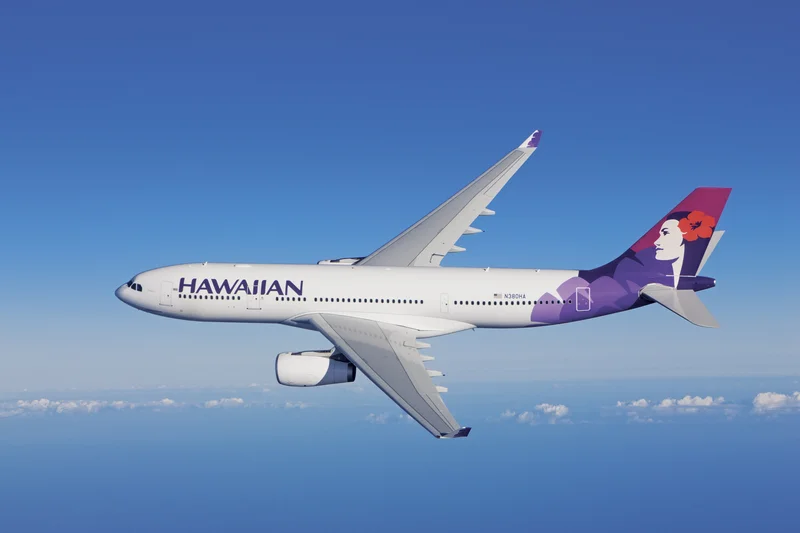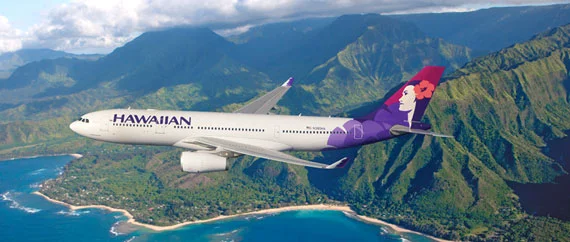The End of an Era for Hawaiian Airlines: What the 'HA' Callsign Retirement Means for the Future
The Ghost in the Machine: When Corporate Mergers Erase Digital Identities
======================================================================
There’s a kind of digital silence that follows an extinction event. It’s not a sound you can hear, but a feeling you get when a familiar signal in the vast, noisy universe of data simply… stops. For decades, the callsign ‘HA’ was that signal. A simple two-letter designation, a shorthand whispered between pilots and air traffic controllers over crackling radios, that meant so much more. It was the digital heartbeat of Hawaiian Airlines.
Then, last Wednesday morning, as the sun rose over Honolulu, that heartbeat fell silent.
The final transmission came from HA866, a flight from Pago Pago that landed around 5:45 a.m. When its wheels touched the tarmac, it wasn’t just the end of a journey; it was the end of a digital bloodline. As of that moment, the Federal Aviation Administration’s newly issued single operating certificate officially folded Hawaiian into Alaska Airlines. The callsign ‘HA’ was retired, and all future flights would identify as ‘AS’.
On the surface, this is just corporate paperwork. A merger, an acquisition, a consolidation of assets. We see it all the time. But I think that view misses something profoundly important about the world we’re building. A company today isn’t just its fleet, its staff, or its brand. It’s a living, breathing digital organism. It exists as a complex web of booking systems, operational logistics, and unique identifiers. The callsign ‘HA’ wasn’t just a name; it was a primary key in a global database, the root of a digital identity that has now been deliberately, methodically, and permanently erased. And what happens when you try to merge two of these complex digital souls?
A System Under Stress
As if on cue from a cosmic scriptwriter with a flair for dramatic irony, the universe decided to test this new, unified creation almost immediately. As Hawaiian’s digital ghost was being exorcised, the very foundation of the new entity began to shake. A massive global outage hit Microsoft Azure—in simpler terms, the vast, powerful cloud computing service that hosts the digital brains of countless corporations, including the newly merged Alaska and Hawaiian Airlines.

Their websites went down. Online check-ins failed. The digital front door to the airline was suddenly slammed shut, forcing passengers back into the analog world of ticket counters and patient agents. When I first saw the news of the Global outage disrupts Alaska and Hawaiian Airlines systems at the exact moment of this historic digital transition, I honestly just sat back in my chair, a little stunned. You couldn't write a better metaphor. The very act of merging two complex digital nervous systems created such a fragile state that a tremor halfway around the world in a server farm could cause immediate paralysis.
This is the invisible story of modern consolidation. It’s not just about painting a new logo on a plane’s tail. It’s about painstakingly stitching together two different digital circulatory systems, each with its own history, its own quirks, its own code. It’s like performing a digital brain transplant—and the patient is always at risk of rejection. The Azure outage, which also took down parts of Costco and Office 365, was a stark reminder of the incredible interconnectedness and terrifying fragility of the infrastructure we now depend on for everything.
The speed of this is just staggering—it means the gap between a fully functional global airline and a system-wide standstill can be a single line of faulty code or a fried server rack thousands of miles away, and the recovery requires a level of coordination that is itself a modern miracle.
The Human Code Behind the Curtain
Of course, the system didn't stay down. Alaska’s teams, in their own words, “worked quickly to stand up our backup infrastructure.” And there’s the human element. There’s the spark of ingenuity that shines brightest when the digital world goes dark. We can talk about cloud architecture and distributed systems all day, but when things break, it’s people—clever, stressed, and probably over-caffeinated engineers—who dive into the digital guts of the machine to perform emergency surgery.
This incident, coming less than a week after a previous IT outage at the airline, forces us to ask some bigger questions. As we continue to merge, consolidate, and build ever-larger, more monolithic digital systems, are we creating efficiencies or just bigger single points of failure? The promise of the cloud is infinite scale and resilience, but its reality is a shared dependency. A problem for Microsoft becomes a problem for Alaska, which becomes a problem for a family trying to get from Seattle to Honolulu.
This isn’t a Luddite’s warning to unplug everything. It’s the opposite. It’s a call to appreciate the monumental, and often invisible, human effort required to keep these complex systems running. The merger between Alaska and Hawaiian isn't just a business decision; it’s an engineering challenge of epic proportions. The real work isn't done in the boardroom. It's done by the programmers tasked with making sure two fundamentally different digital histories can learn to speak the same language without crashing the whole system. What does it take to preserve the unique 'aloha' spirit of one brand when its very code is being overwritten by another?
The Code That Carries the Culture
So, the ‘HA’ callsign is gone, a ghost in the global aviation machine. But the real question is what remains. A brand’s soul isn’t in its name, but in the experience it delivers. The challenge for Alaska Airlines isn't just integrating flight numbers and IT systems. It's about integrating a culture. It’s about ensuring that the digital tools they build don't just optimize for efficiency, but also carry the warmth and spirit that made Hawaiian unique. The true merger won't be complete when the last server is migrated, but when a passenger flying on an ‘AS’ flight to Hawaii still feels the essence of ‘HA’. That’s a task that can’t be automated.
Related Articles
Hawaiian Airlines Systems Crash: Another Global 'Oops' from Microsoft?
So, let me get this straight. On Wednesday, you couldn't check in for your Alaska Airlines flight to...
